-
 Bitcoin
Bitcoin $119800
1.38% -
 Ethereum
Ethereum $3873
3.25% -
 XRP
XRP $3.247
1.85% -
 Tether USDt
Tether USDt $1.001
0.02% -
 BNB
BNB $840.4
5.94% -
 Solana
Solana $190.0
2.55% -
 USDC
USDC $1.000
0.03% -
 Dogecoin
Dogecoin $0.2433
2.69% -
 TRON
TRON $0.3197
-0.05% -
 Cardano
Cardano $0.8367
1.39% -
 Sui
Sui $4.327
3.11% -
 Hyperliquid
Hyperliquid $44.00
0.31% -
 Stellar
Stellar $0.4461
1.76% -
 Chainlink
Chainlink $19.25
4.61% -
 Hedera
Hedera $0.2941
3.90% -
 Bitcoin Cash
Bitcoin Cash $598.4
6.89% -
 Avalanche
Avalanche $26.19
4.67% -
 Litecoin
Litecoin $115.1
0.50% -
 Shiba Inu
Shiba Inu $0.00001427
1.55% -
 Toncoin
Toncoin $3.379
2.01% -
 UNUS SED LEO
UNUS SED LEO $8.966
-0.16% -
 Ethena USDe
Ethena USDe $1.001
0.02% -
 Uniswap
Uniswap $11.04
4.16% -
 Polkadot
Polkadot $4.239
2.00% -
 Monero
Monero $324.6
0.36% -
 Bitget Token
Bitget Token $4.672
2.46% -
 Pepe
Pepe $0.00001294
2.69% -
 Dai
Dai $0.0000
0.01% -
 Cronos
Cronos $0.1443
2.71% -
 Aave
Aave $302.9
1.98%
OKX contract trading Explanation
OKX contract trading enables traders to trade digital assets with leverage, providing opportunities to maximize profits while managing risk through long and short positions and various order types.
Nov 12, 2024 at 03:52 pm
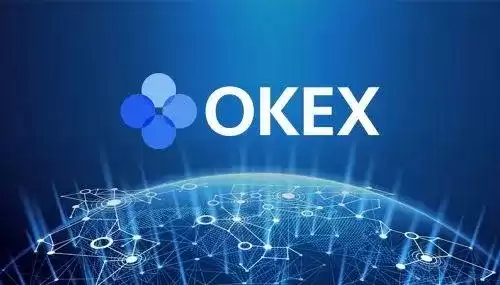
OKX Contract Trading: A Comprehensive Guide
Introduction
OKX contract trading is a powerful tool available to traders of all experience levels. With the ability to trade a variety of digital assets with leverage, contract trading can provide opportunities to maximize profits while managing risk. This guide will provide a comprehensive overview of OKX contract trading, covering everything you need to know to get started and start executing profitable trades.
Step 1: Understanding Contract Trading Basics
- What are Contract Trading: Contract trading involves buying or selling contracts that represent the underlying asset, such as Bitcoin or Ethereum. These contracts are standardized agreements with defined terms, including the underlying asset, contract size, and expiration date.
- Leverage: Leverage is a crucial concept in contract trading. It allows traders to amplify their trading positions with borrowed capital, potentially increasing both profits and losses.
- Long and Short Positions: Contract trading enables traders to take both long and short positions. A long position represents a bet that the asset's price will rise, while a short position bets on a price decline.
- Liquidation: If a trader's account balance falls below a certain level known as the maintenance margin, their positions may be liquidated to cover any losses incurred.
Step 2: Opening an OKX Account
- Create an Account: To start trading on OKX, you need to create an account. The process involves providing basic personal and contact information and completing KYC (Know Your Customer) verification.
- Deposit Funds: Once your account is created, you need to deposit funds to start trading. OKX supports a variety of deposit methods, including fiat currencies, cryptocurrencies, and third-party payment platforms.
- Enable Contract Trading: Before you can start trading contracts, you need to enable contract trading on your account. This can be done by navigating to the "Settings" section and selecting "Contract Trading."
Step 3: Choosing the Right Contract
- Available Contracts: OKX offers a wide range of contract types, including futures, perpetual swaps, and options. Each contract type has its unique characteristics, such as expiration dates and funding rates.
- Leverage Selection: The leverage you choose will depend on your risk tolerance and trading strategy. Higher leverage amplifies potential profits but also increases the risk of liquidation.
- Underlying Asset: Consider the underlying asset you wish to trade. OKX offers contracts for various cryptocurrencies, including Bitcoin, Ethereum, and altcoins.
Step 4: Placing an Order
- Order Types: OKX supports various order types, allowing you to customize your trading strategy. Some common order types include limit orders, market orders, and stop-limit orders.
- Order Execution: Once you have selected an order type, you need to enter the quantity of contracts you wish to buy or sell and the price or limit price. The order book displays the current bid and ask prices for the contract.
- Position Management: After executing an order, your position will be displayed in the "Positions" section. Here, you can manage your position, including adding to it, reducing it, or closing it out.
Step 5: Risk Management
- Stop-Loss Orders: Stop-loss orders are essential risk management tools that help limit potential losses. They automatically close your position if the price reaches a specified level.
- Take-Profit Orders: Take-profit orders automatically close your position when the price reaches a specified profit target. This helps secure profits and prevent overtrading.
- Margin Management: Monitor your margin balance closely. Excessive leverage can lead to forced liquidations, resulting in significant losses.
Step 6: Monitoring and Evaluating
- Real-Time Market Data: OKX provides real-time market data, including price charts, order books, and market depth. This information is critical for making informed trading decisions.
- Trading History: Track your trading history to identify patterns, analyze your performance, and improve your trading strategies.
- Community Support: OKX offers a vibrant community forum where you can connect with other traders, share ideas, and learn from experienced professionals.
Disclaimer:info@kdj.com
The information provided is not trading advice. kdj.com does not assume any responsibility for any investments made based on the information provided in this article. Cryptocurrencies are highly volatile and it is highly recommended that you invest with caution after thorough research!
If you believe that the content used on this website infringes your copyright, please contact us immediately (info@kdj.com) and we will delete it promptly.
- Bitcoin's Potential Final Rally: Decoding Historical Data and Future Projections
- 2025-07-28 06:30:11
- BlockDAG, XRP, and Utility-Driven Growth: A New Era for Crypto?
- 2025-07-28 06:30:11
- Litecoin's ADX Crossover: Rally Potential or False Dawn?
- 2025-07-28 06:50:11
- Arctic Pablo Coin: Meme Coin Mania and Presale Buzz in 2025
- 2025-07-28 06:50:11
- Arctic Pablo: Meme Coin Mania or ROI Rocket?
- 2025-07-28 06:55:11
- Worldcoin's Wild Ride: Uptrend Battles Resistance Amidst Regulatory Waves
- 2025-07-28 07:00:12
Related knowledge
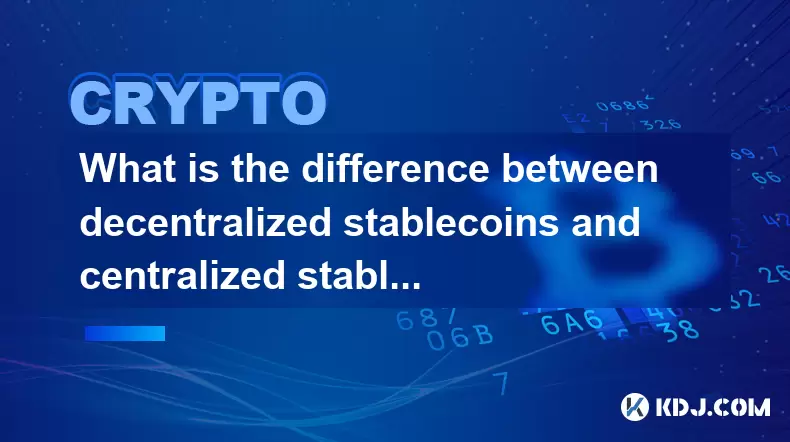
What is the difference between decentralized stablecoins and centralized stablecoins? Pros and cons comparison
Jun 15,2025 at 09:42am
What Are Stablecoins and Why Do They Matter?Stablecoins are a category of cryptocurrencies designed to maintain a stable value, usually pegged to an e...
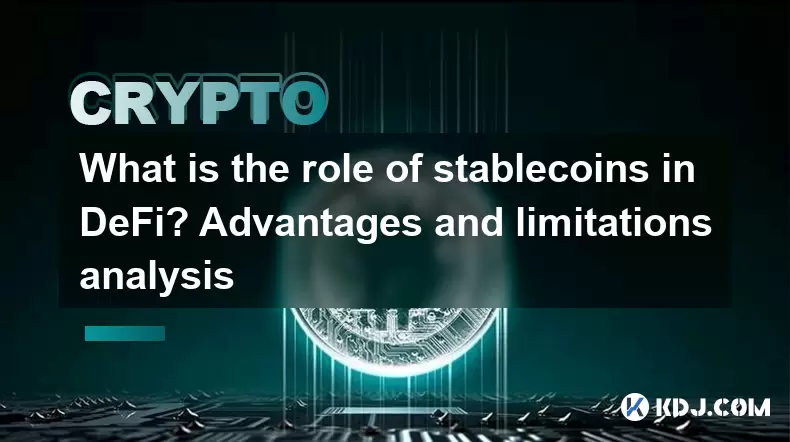
What is the role of stablecoins in DeFi? Advantages and limitations analysis
Jun 14,2025 at 06:28am
Understanding Stablecoins in the DeFi EcosystemStablecoins play a pivotal role in the decentralized finance (DeFi) landscape by providing a bridge bet...
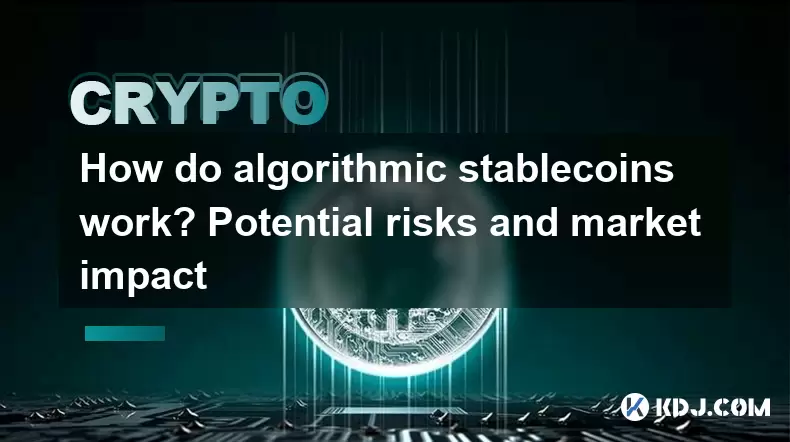
How do algorithmic stablecoins work? Potential risks and market impact
Jun 12,2025 at 02:07pm
Understanding Algorithmic StablecoinsAlgorithmic stablecoins are a type of cryptocurrency designed to maintain a stable value relative to a specific a...
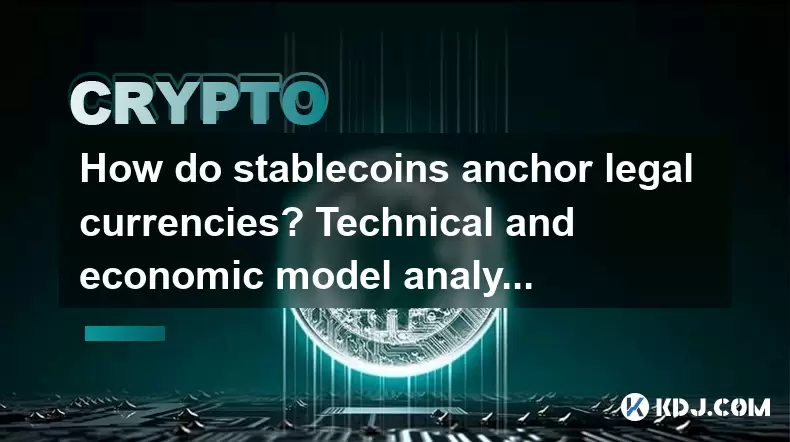
How do stablecoins anchor legal currencies? Technical and economic model analysis
Jun 16,2025 at 08:43am
Understanding the Concept of StablecoinsStablecoins are a category of cryptocurrencies designed to maintain a stable value relative to a specific asse...
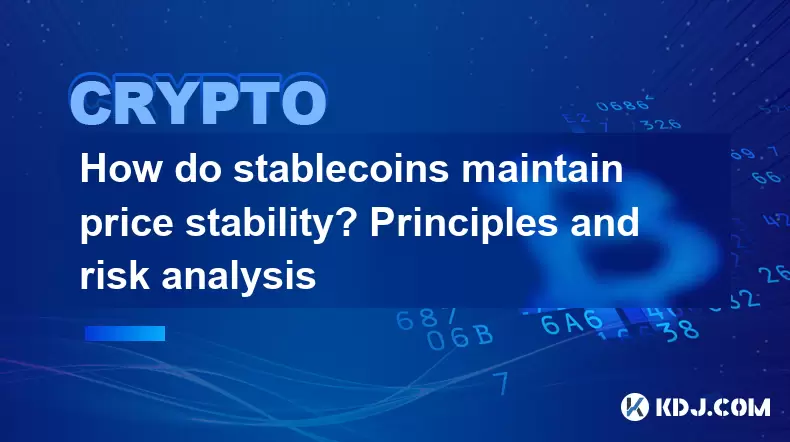
How do stablecoins maintain price stability? Principles and risk analysis
Jun 11,2025 at 12:01am
Understanding the Mechanisms Behind Stablecoin StabilityStablecoins are a category of cryptocurrencies designed to minimize price volatility, often pe...

What is the operating mechanism of stablecoins? In-depth exploration of its stability principle
Jun 10,2025 at 09:28pm
Understanding the Core Concept of StablecoinsStablecoins are a unique category within the cryptocurrency market, designed to address one of the most s...

What is the difference between decentralized stablecoins and centralized stablecoins? Pros and cons comparison
Jun 15,2025 at 09:42am
What Are Stablecoins and Why Do They Matter?Stablecoins are a category of cryptocurrencies designed to maintain a stable value, usually pegged to an e...

What is the role of stablecoins in DeFi? Advantages and limitations analysis
Jun 14,2025 at 06:28am
Understanding Stablecoins in the DeFi EcosystemStablecoins play a pivotal role in the decentralized finance (DeFi) landscape by providing a bridge bet...

How do algorithmic stablecoins work? Potential risks and market impact
Jun 12,2025 at 02:07pm
Understanding Algorithmic StablecoinsAlgorithmic stablecoins are a type of cryptocurrency designed to maintain a stable value relative to a specific a...

How do stablecoins anchor legal currencies? Technical and economic model analysis
Jun 16,2025 at 08:43am
Understanding the Concept of StablecoinsStablecoins are a category of cryptocurrencies designed to maintain a stable value relative to a specific asse...

How do stablecoins maintain price stability? Principles and risk analysis
Jun 11,2025 at 12:01am
Understanding the Mechanisms Behind Stablecoin StabilityStablecoins are a category of cryptocurrencies designed to minimize price volatility, often pe...

What is the operating mechanism of stablecoins? In-depth exploration of its stability principle
Jun 10,2025 at 09:28pm
Understanding the Core Concept of StablecoinsStablecoins are a unique category within the cryptocurrency market, designed to address one of the most s...
See all articles

























































































